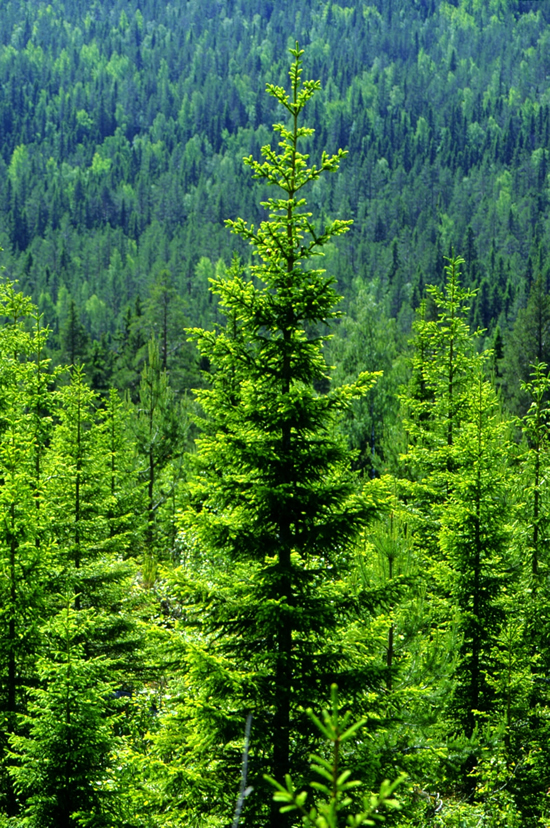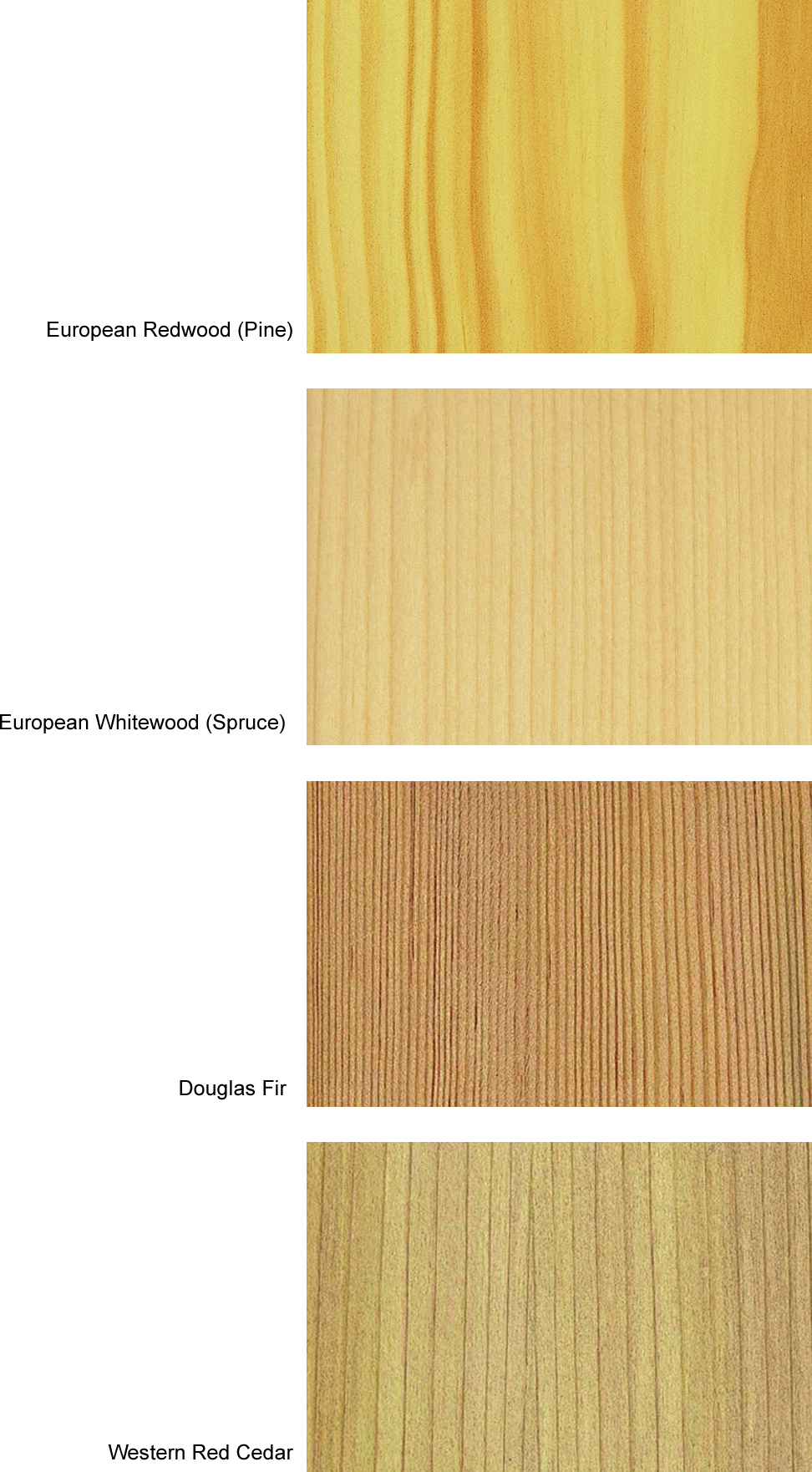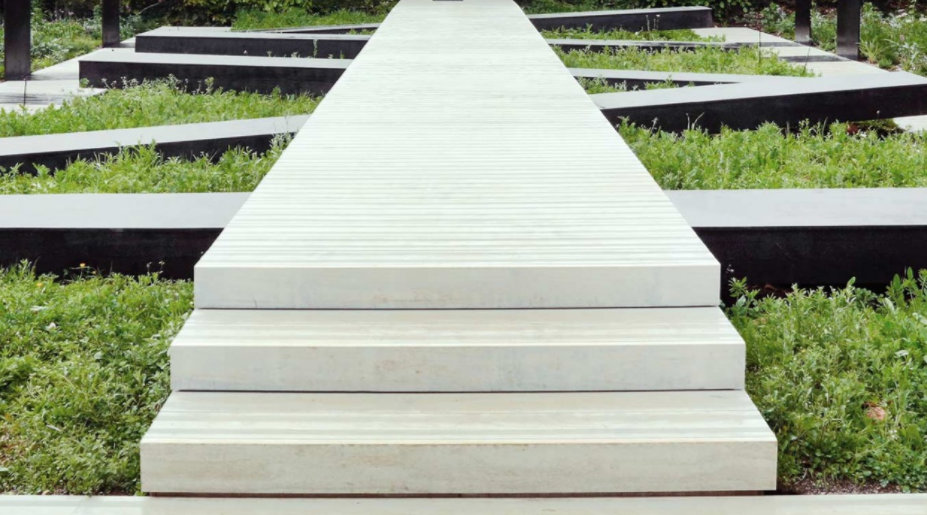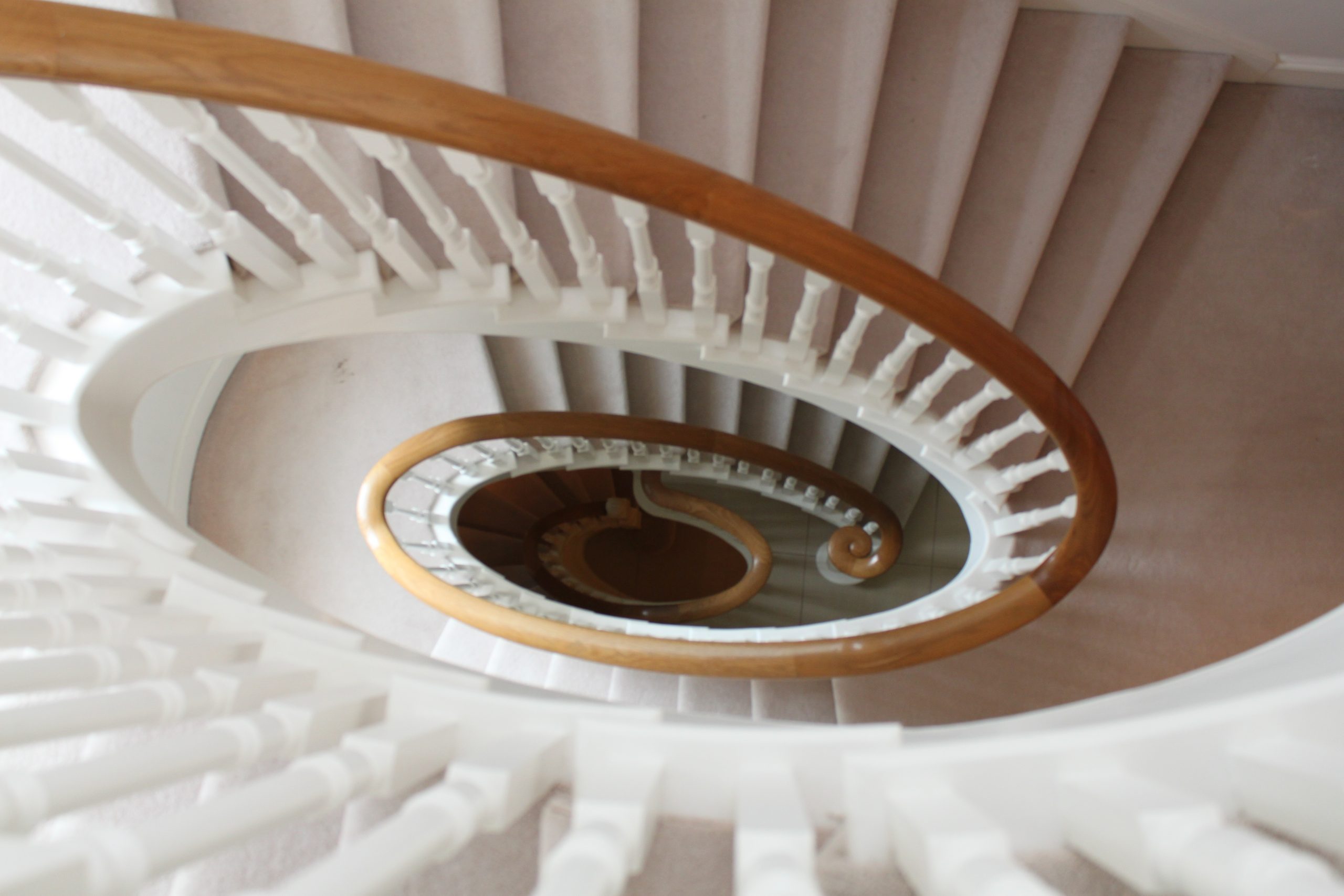Timber Species
Wood Campus Trade Topics are produced in collaboration with Timber Development UK.
TOPIC CHECKLIST
- Is the species suitable for the end use?
- Does it have the right strength qualities?
- How durable is it?
- What does it look like?
- Will it last?
- Are there legal and sustainable supplies?
What are the main types of timber species?
Softwoods
Softwood timber is obtained from conifers – trees with needle-like leaves, usually bearing cones. Softwoods are the most commonly-used timber because they offer good value and are readily available from sustainably-managed forests. They are less dense and easier to work with than most hardwoods.
Of the 650 species of softwoods throughout the world, around 50 are in commercial use, with the most common being European Redwood and Whitewood (pine and spruce).
Most softwood used in the UK comes from Sweden, the UK, Finland, Latvia, Germany and Russia.
Hardwoods
Hardwoods are mainly broadleaf, deciduous trees, shedding their leaves in winter, although some hardwoods are evergreen. There are two groups, temperate and tropical, accounting for some 20,000 different commercial species.
Although generally more durable and stronger than softwood, they must be used in the correct way and environment.
The majority of hardwoods are deeper in colour and have a higher density than softwood, due to their cellular structure. However, some hardwoods, particularly tropical species, grow fast enough to be of similar, or lower, density than slow growing softwoods.
Hardwoods are usually supplied in random lengths and widths, but in standard thicknesses are often used as veneers on softwood.
Temperate hardwoods
Found in temperate areas of the world, such as Europe, North America, South America, Asia, Australia and New Zealand, most of the temperate hardwoods used in the UK, such as oak, birch or beech, come from Europe or North America.
Tropical hardwoods
Found in tropical areas such as Central and South America, West and Central Africa and South East Asia.
Illegal trade in tropical hardwoods has been largely responsible for deforestation. Care should be taken to ensure you are supplied with timber from legal and sustainable sources.
See Wood Campus CPD module Procuring Sustainable Timber.
Sourcing sustainable timber
- See Timber Trade Topic 1 – Sourcing Sustainable Timber
- See Wood Campus CPD module – Procuring Sustainable Timber

Which species of wood should I choose?
Consider these points:
- The end use – for example, is the wood to be used as a structural material and then covered with something else, i.e. studding covered by plasterboard, or will it be exposed?
- What strength is required? Does the timber need to have a high bending strength, such as a joist, or a high tensile strength where the timber is stretched in the application?
- Is the wood to be used purely for a decorative effect? Is this to be a dark or light colour?
- Is the wood to be machined? Some species are more easily machined than others.
- Is the wood from a certified legal and sustainably-managed forest source (i.e. FSC or PEFC) or is it from a source that is making progress towards certification (i.e. Verified Progress)?
- Cost. It may look nice, but is it worth the additional cost, if another less expensive and more commercially available timber can do the same job?
- Durability and treatability: is it necessary to use preservatives?

| SPECIES/ORIGIN | COLOUR | DENSITY KG/M2 | TEXTURE | MOISTURE MOVEMENT | WORKING QUALITIES | DURABILITY1 | TREATABILITY2 (HEARTWOOD) | USES |
|---|---|---|---|---|---|---|---|---|
| Redwood, European Scandinavia/Europe | Creamy white | 510 | Medium | Medium | Medium | Slightly to moderately durable | Difficult to extremely difficult | Flooring, external and interior joinery, furniture, structural |
| Whitewood, European Scandinavia/European | White to pale yellowish brown | 470 | Medium | Medium | Good | Slightly durable | Difficult to extremely difficult | Flooring and interior joinery, furniture, structural |
| Scots pine UK | Creamy white | 510 | Course | Medium | Medium | Slightly to moderately durable | Difficult to extremely difficult | External and interior joinery, structural |
| Douglas fir N America, UK and Europe | Reddish brown to light brown | 530 | Medium | Small | Good | Moderately durable | Extremely difficult | Interior and exterior joinery, cladding |
| Larch, European Europe | Pale reddish brown | 550 | Fine | Small | Medium | Slightly to moderately durable | Extremely difficult | Cladding, trim |
| Western red cedar N America | Reddish brown | 390 | Course | Small | Good | Moderately durable | Difficult to extremely difficult | Cladding |
| Spruce, Sitka N America And UK | Reddish brown | 450 | Course | Small | Good | Not durable to slightly durable | Difficult | Interior joinery, packing, pallets, structural |

| SPECIES/ORIGIN | COLOUR | DENSITY KG/M2 | TEXTURE | MOISTURE MOVEMENT | WORKING QUALITIES | DURABILITY1 | TREATABILITY2 (HEARTWOOD) | USES |
|---|---|---|---|---|---|---|---|---|
| Beech, European Europe, UK | White/cream (reddish brown after steaming) | 720 | Fine | Large | Good | Not durable | Easy (red heart extremely difficult) | Furniture, interior joinery, flooring, plywood |
| Birch, European Europe, Scandinavia | Light brown | 670 | Fine | Large | Good | Not durable | Easy to moderately easy | Cabinet making, furniture, plywood |
| Cherry, European Europe, UK, Scandinavia, Asia, N.Africa | Pinkish brown | 510 | Fine | Medium | Good | Moderately durable | No information | Cabinet making furniture |
| Chestnut, Sweet Europe, UK, Asia Minor, Australia, N.Africa | Yellow to brown | 530 | Medium | Large | Good | Durable | Extremely difficult | Interior and exterior joinery, fencing, trim, structural |
| Oak, European Europe, Asia Minor, N.Africa | Yellowish brown | 550 | Medium to coarse | Medium | Medium to difficult | Durable | Extremely difficult | Furniture, interior and exterior joinery, flooring, heavy structural |
| SPECIES/ORIGIN | COLOUR | DENSITY KG/M2 | TEXTURE | MOISTURE MOVEMENT | WORKING QUALITIES | DURABILITY1 | TREATABILITY2 (HEARTWOOD) | USES |
|---|---|---|---|---|---|---|---|---|
| Teak Burma, Indonesia, Thailand and plantations elsewhere | Golden brown some with dark markings | 660 | Medium | Small | Medium | Very durable | Extremely difficult | Interior and exterior joinery, sports goods, furniture |
| Iroko W.Africa | Yellow brown | 660 | Medium | Small | Medium to difficult | Durable to very durable | Extremely difficult | interior and exterior joinery, bridge construction |
| Sapele W.Africa | Reddish brown | 640 | Medium | Medium | Medium | Moderately durable | Difficult | Interior and exterior joinery, furniture, flooring, veneer |
| Utile W.Africa | Reddish brown | 660 | Medium | Medium | Medium | Moderately durable to durable | Extremely difficult | Interior and exterior joinery, furniture, cabinet work |
1Moisture movement
For structural purposes movement is not usually significant, but if you require stability in varying humidities (e.g. decorative flooring), use a species with small movement. These classifications are not directly related to the shrinkage of green timber.
2Durability
Refers to resistance to fungal decay of the heartwood only. Sapwood in most species is generally not durable and should not be used in exposed conditions without preservative treatment. Classes referred to in BS EN 350-1 are:
Class 1 – ‘very durable’
Class 2 – ‘durable’
Class 3 – ‘moderately durable’
Class 4 – ‘slightly durable’
Class 5 – ‘not durable’
3Treatability
Refers to how easily timbers can be penetrated with vacuum pressure preservative treatments. The four levels of treatability in BSEN 350-2 are ‘easy’, ‘moderately easy’, ‘difficult’, ‘extremely difficult’.
Modified timber
A number of brands of timber are now available that have been modified chemically, such as Accoya™, or by heat treatment, such as Thermowood.
Generally, these products provide the sustainability of softwoods with the stability and durability normally associated with hardwoods.
The different modification processes affect the performance of the timbers in different ways. Consult the manufacturer for specific details.

Tannin stain
Tannin is natural in softwoods and hardwoods. For example, oak and Western red cedar will exude tannin as they dry, which may give the appearance of a black deposit. As a result, water running off these surfaces can leave staining, particularly around metal fixings.
Further information and advice
Sourcing sustainable timber
- See Timber Trade Topic 1 – Sourcing Sustainable Timber
- See Wood Campus CPD module Procuring Sustainable Timber
Available species
Consult your local timber merchant or Timber Trade Federation member www.ttf.co.uk
Swedish grown species
www.swedishwood.com
UK grown species
www.forestry.gov.uk
American species
www.americansoftwoods.com
www.americanhardwood.org
Technical information
www.trada.co.uk
Sustainable timber
Timber is the most sustainable mainstream building product. It is naturally renewable. Over 90% of timber used in UK construction comes from Europe, where more trees are grown than harvested (source: TTF Statistical Review 2016).
Softwood and temperate hardwood forests in Scandinavia, Europe, Canada and North America are stable or growing. Growing forests act as carbon sinks; wood products act as carbon stores.
Ask for PEFC or FSC Chain of Custody certification.
See Wood Campus RIBA CPD module Procuring Sustainable Timber for more on timber certification and sustainability and government requirements.



